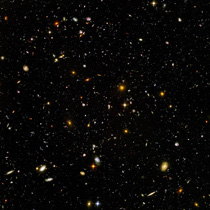- The universe includes all of space and time; this means stars, planets, energy, everything!
- It is believed that the universe developed from the Big Bang, an event that describes the rapid expansion of matter from an initial state 13.8 billion years ago. The universe has continued to expand ever since.
- Models of the universe have changed as our understanding has developed over the years.
- The Sun is found at the centre of the Solar System. It is just one of billions of stars in the Milky Way galaxy, which in turn is just one of billions of galaxies in the universe.
- Red dwarfs, red giants and white dwarfs are some of the different types of stars out there.
- Galaxies can form in different shapes, such as spiral, elliptical and irregular. The Milky Way galaxy, where Earth is located, is a spiral galaxy.
- Clouds of gas and dust in space are known as nebulae. Some well-known examples observed by astronomers include the Horsehead Nebula, Cat’s Eye Nebula and Crab Nebula.
- The universe is thought to contain a large amount of “dark matter” and “dark energy” that affect the universe in ways that are difficult for us to understand.
- We are limited in what we can observe of the universe by the speed of light. For example, it takes roughly 8 minutes and 17 seconds for light from the Sun to reach Earth.
- “Cosmos” is another word sometimes used to describe the universe.
- No one knows the ultimate fate of the universe, but current theories suggest the “heat death of the universe” as it continues to expand. Not for a long, long, long time though!
| | |  | | More Space Facts: | | | | | | | | | | | | | | | | | | | Universe Facts |
|